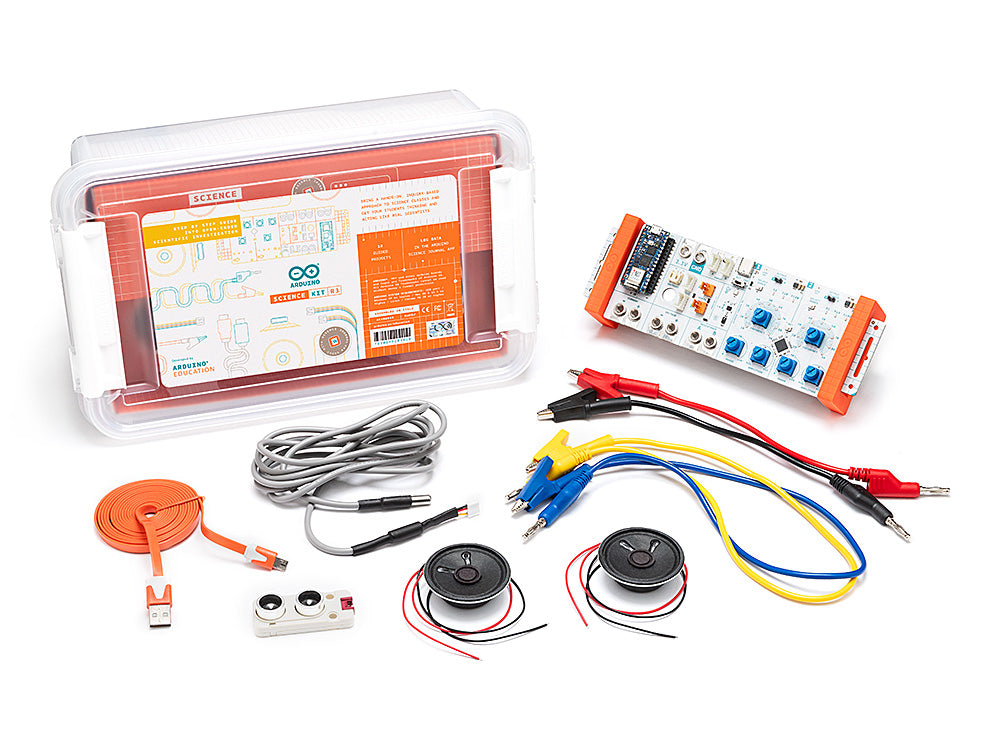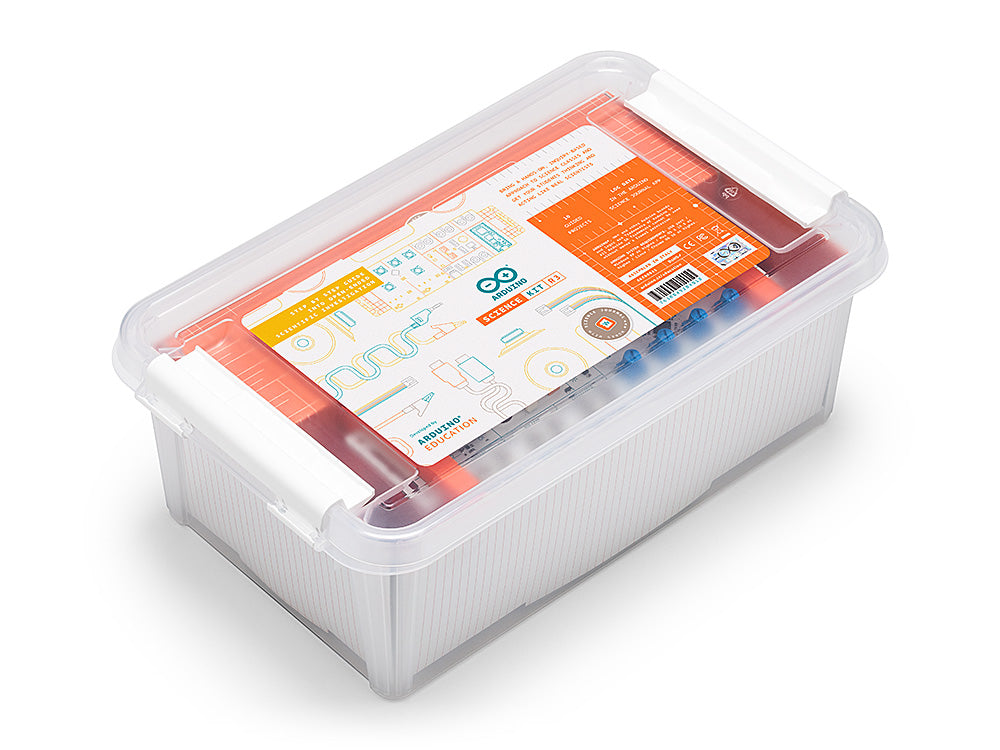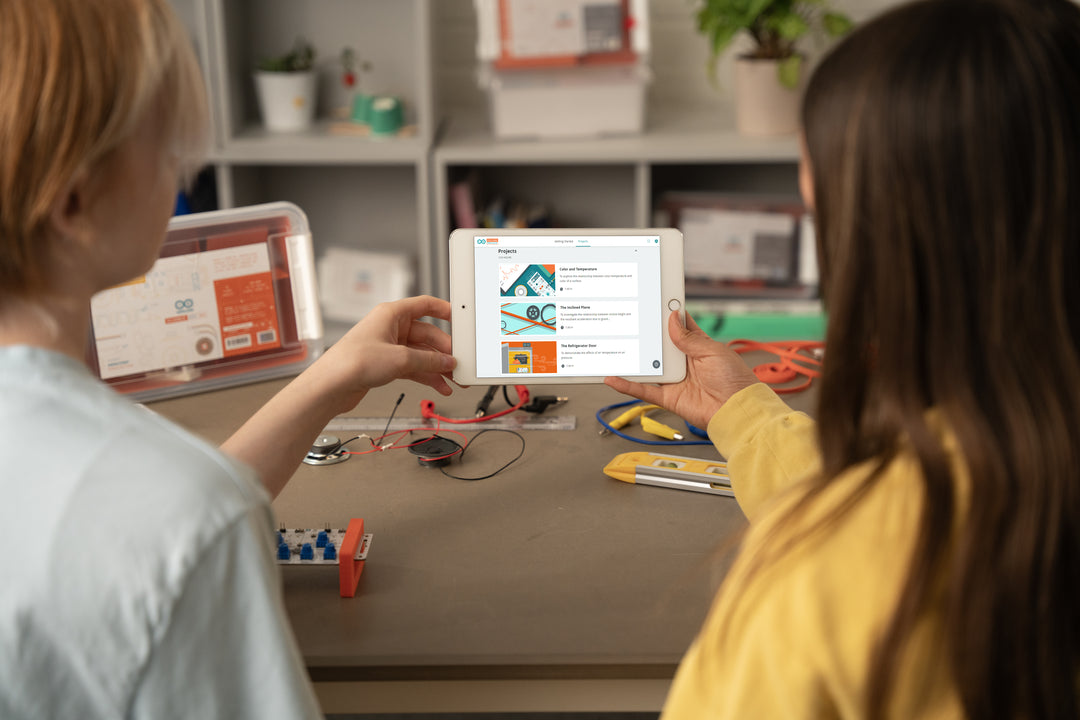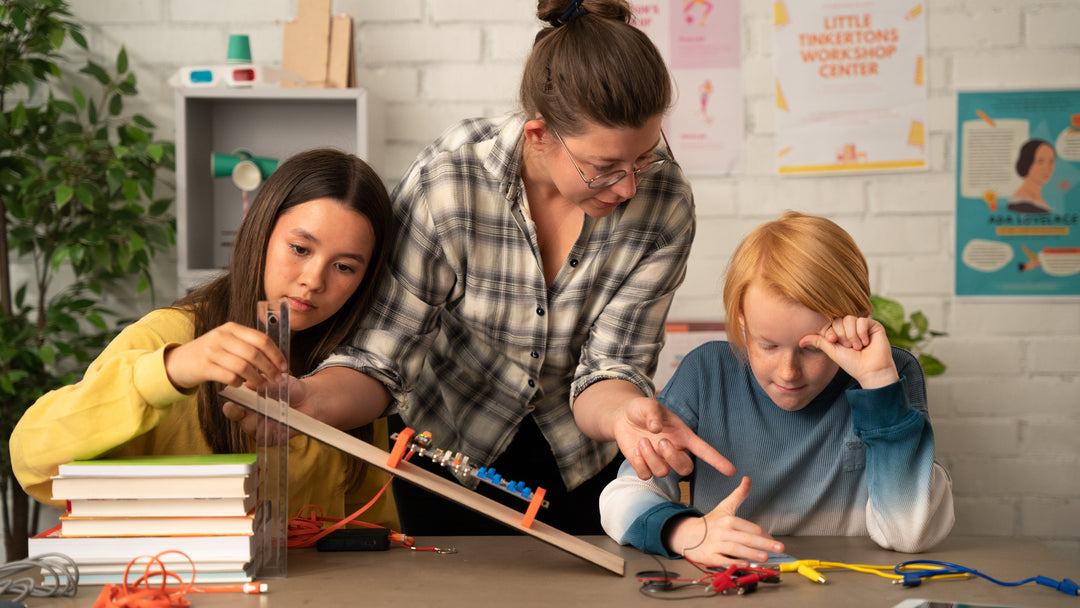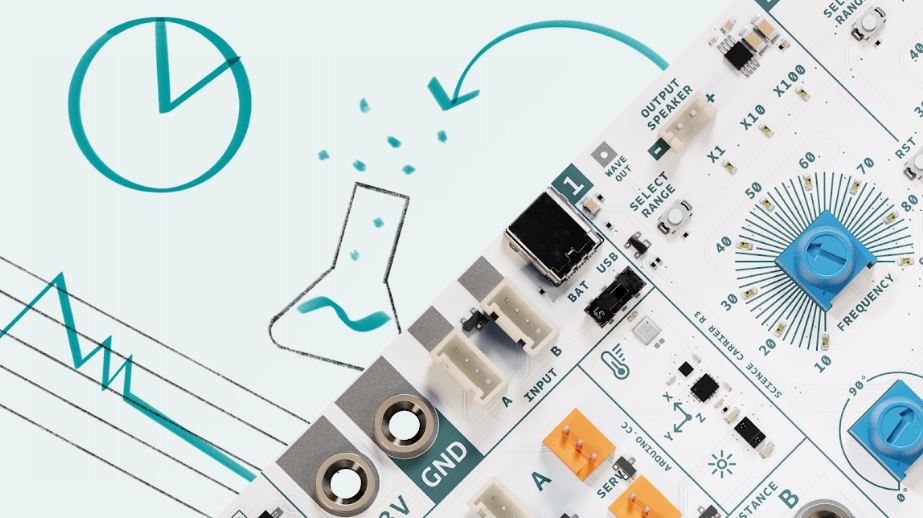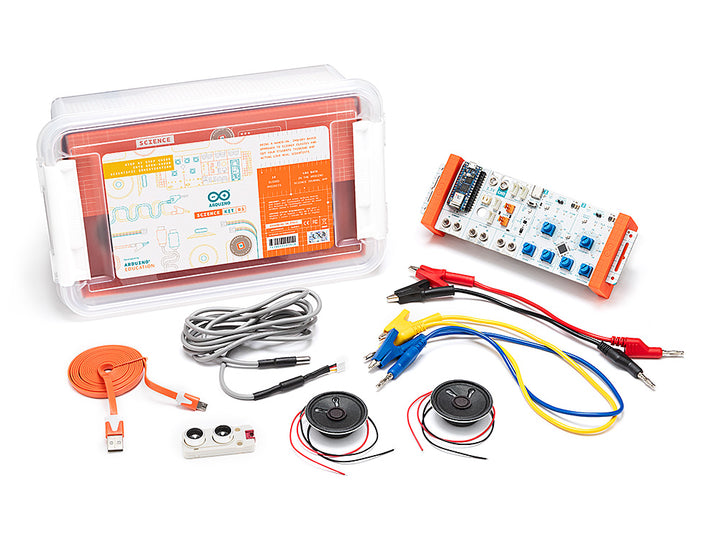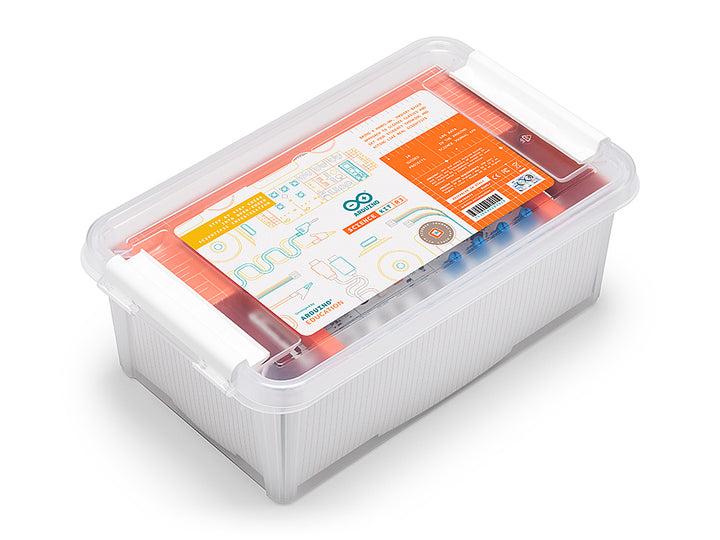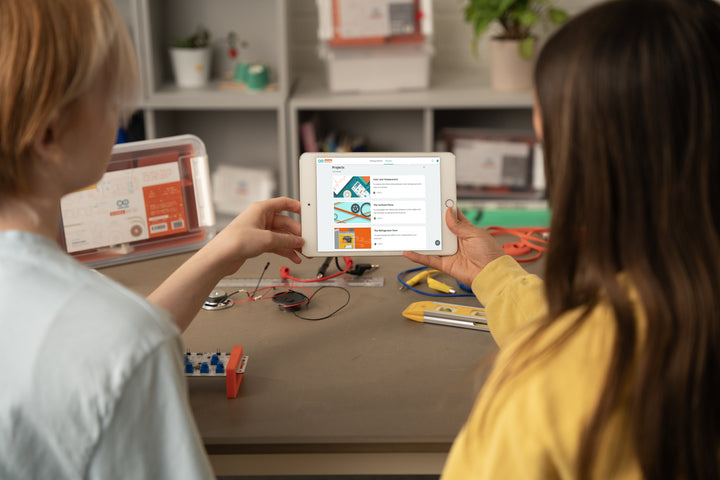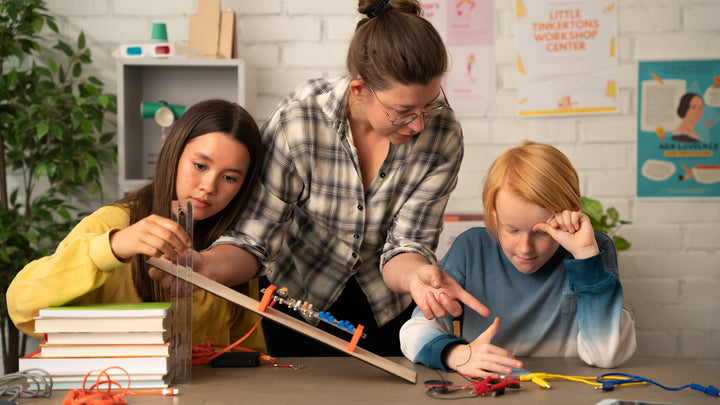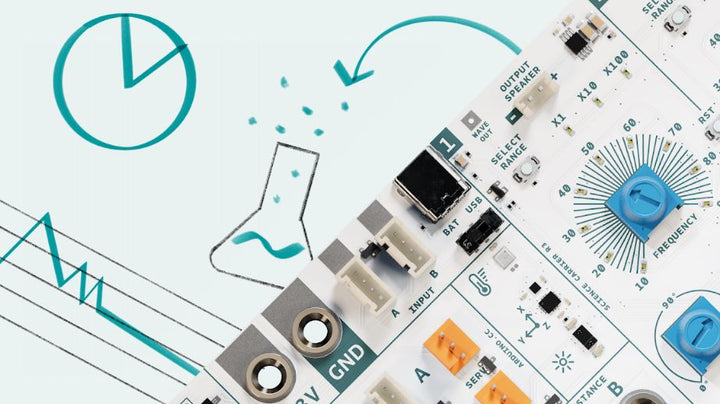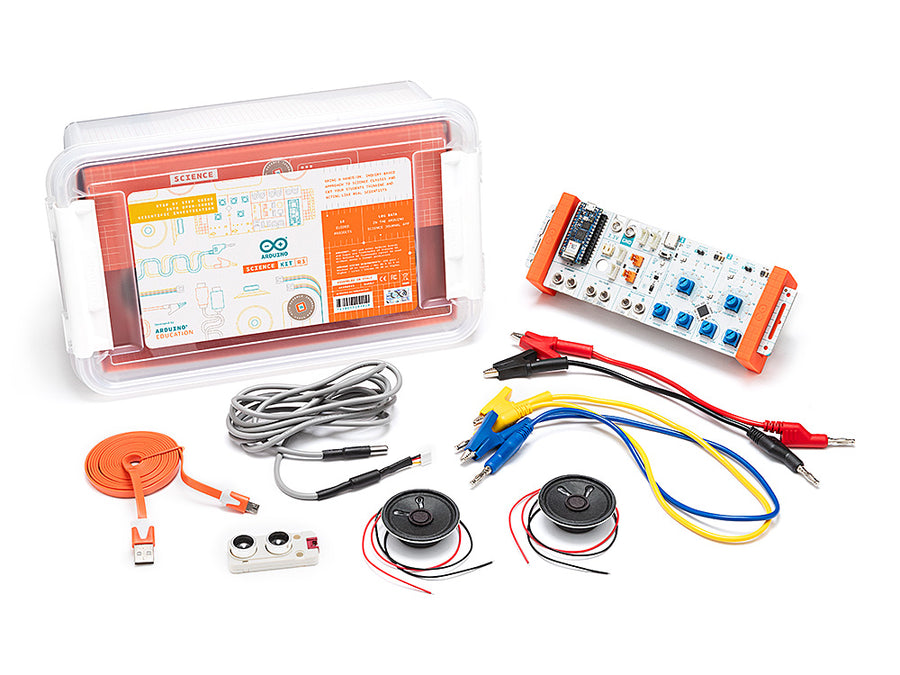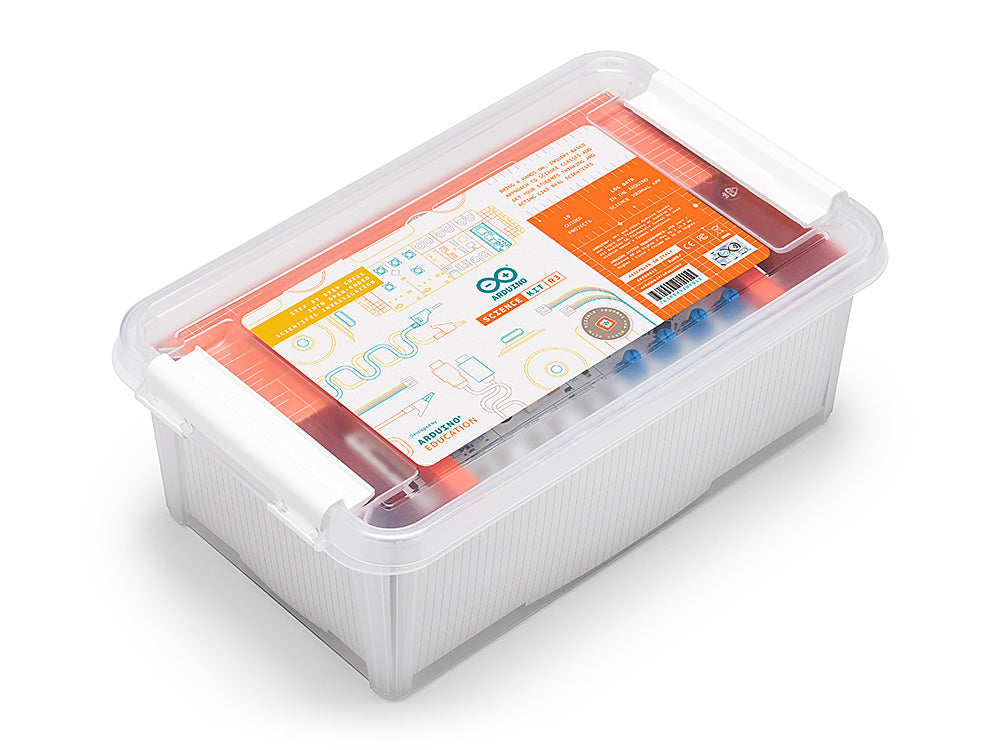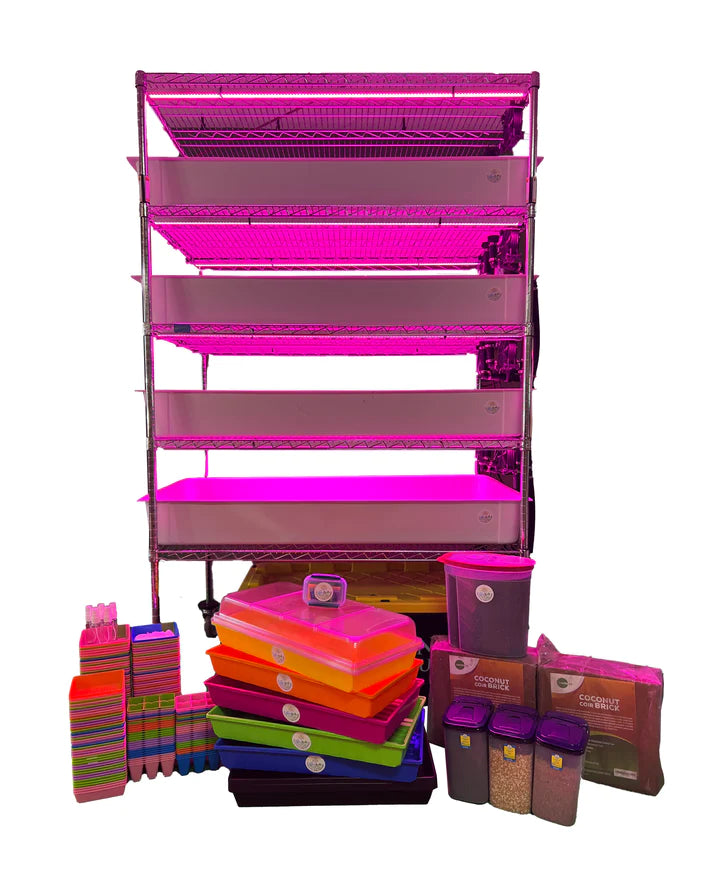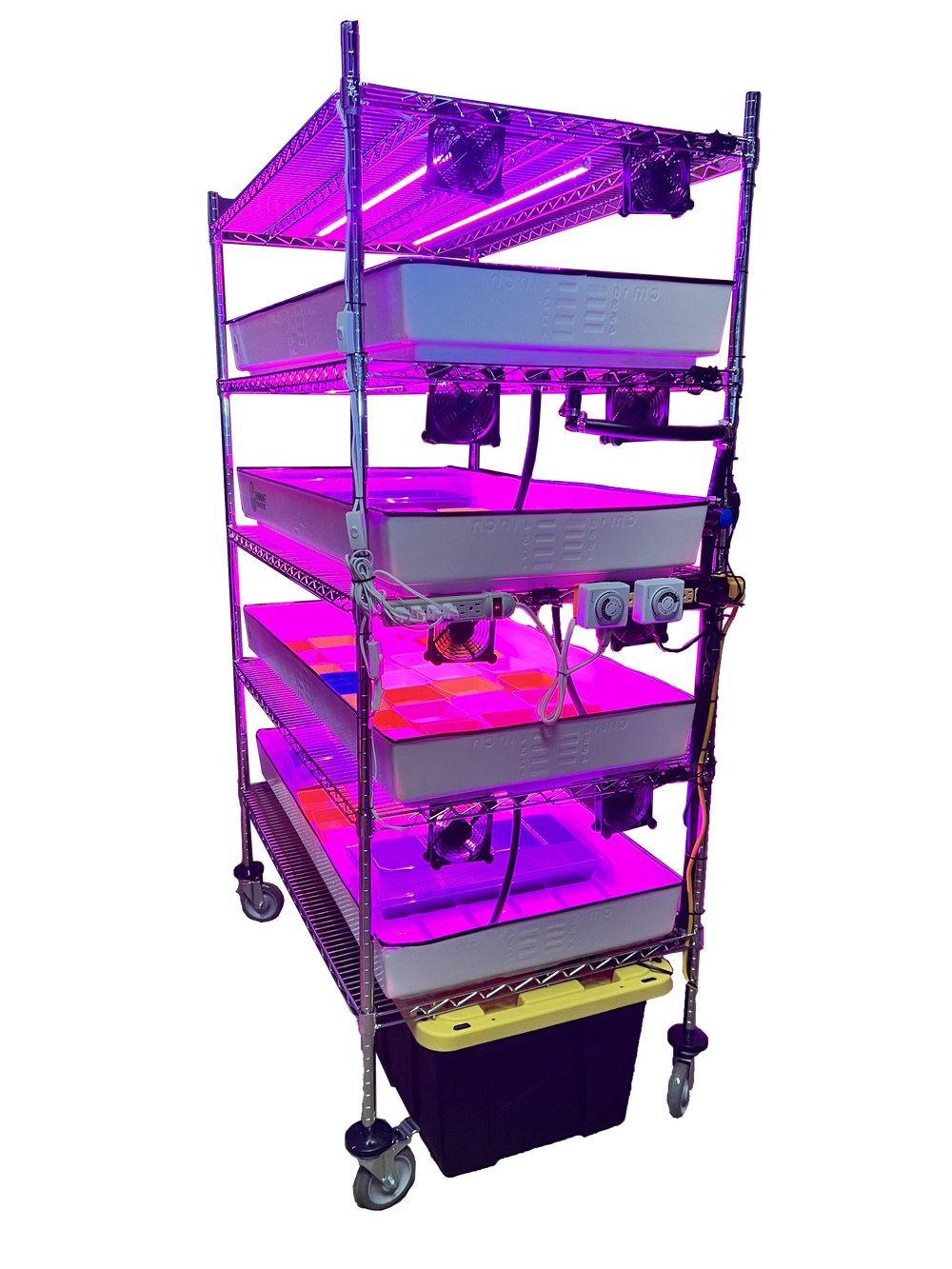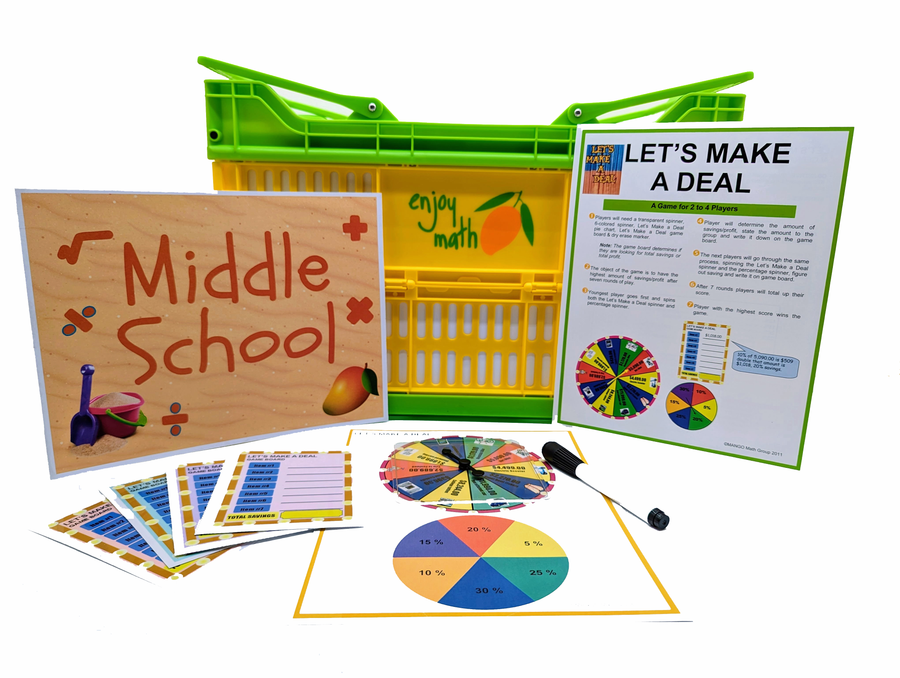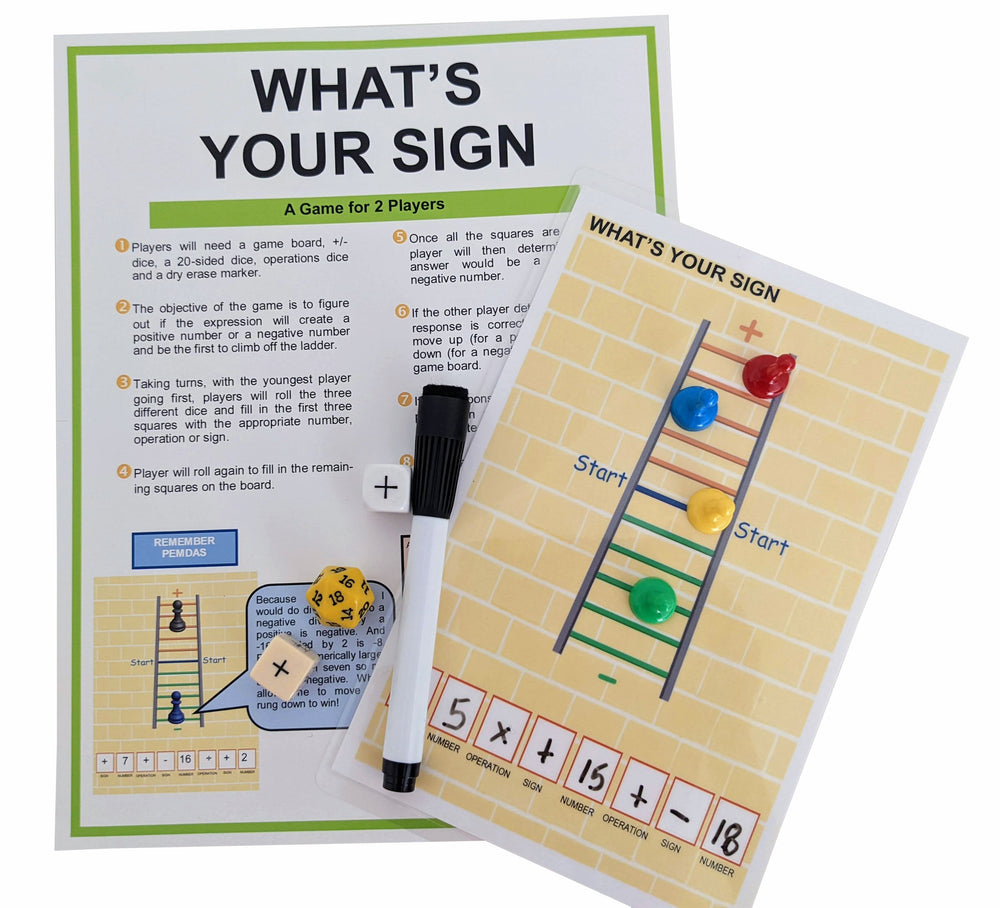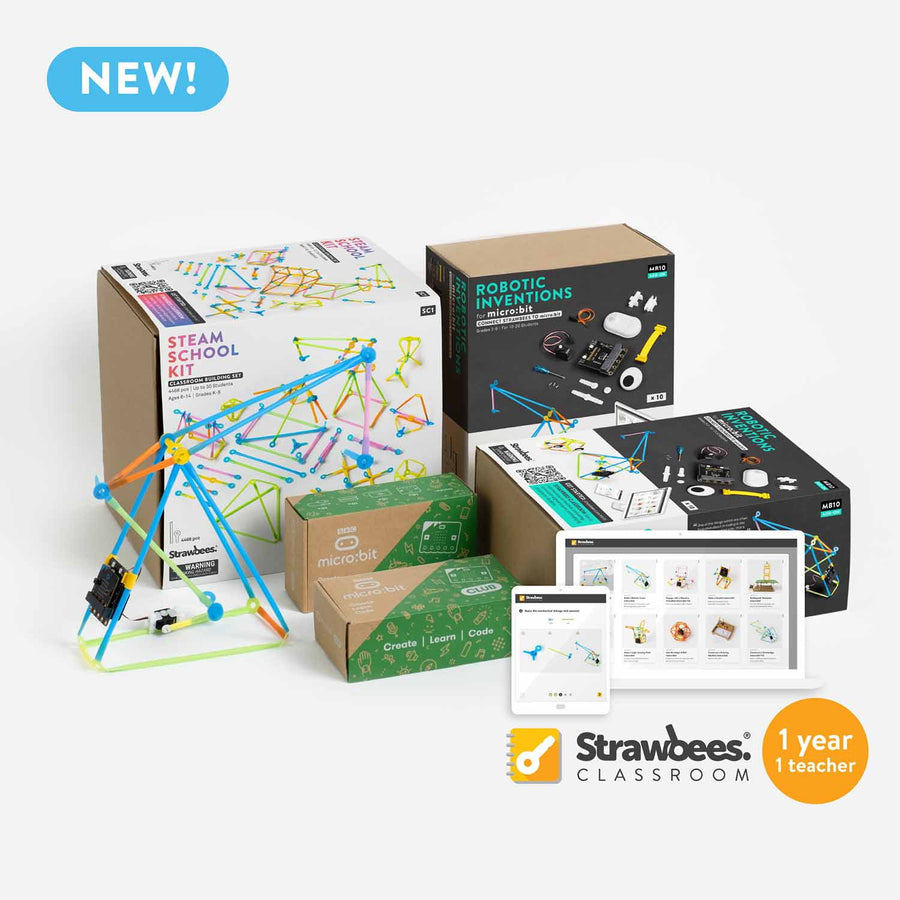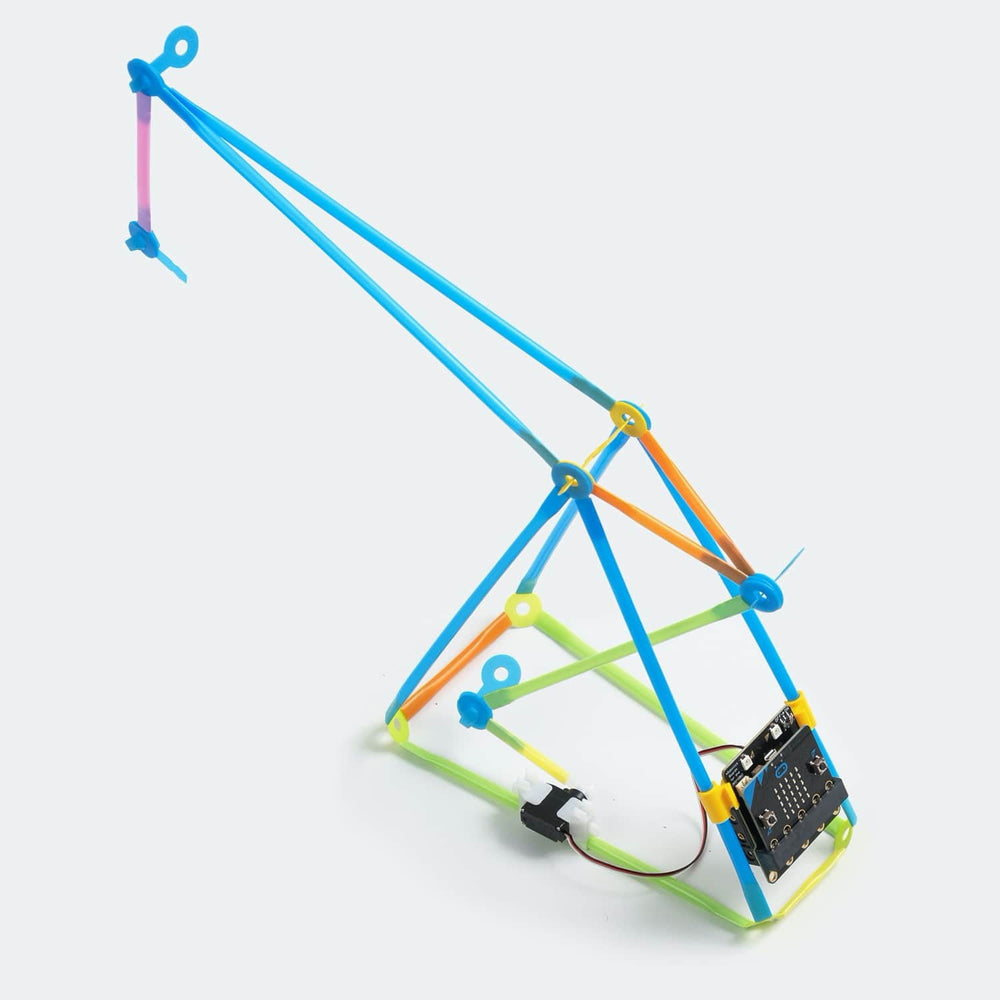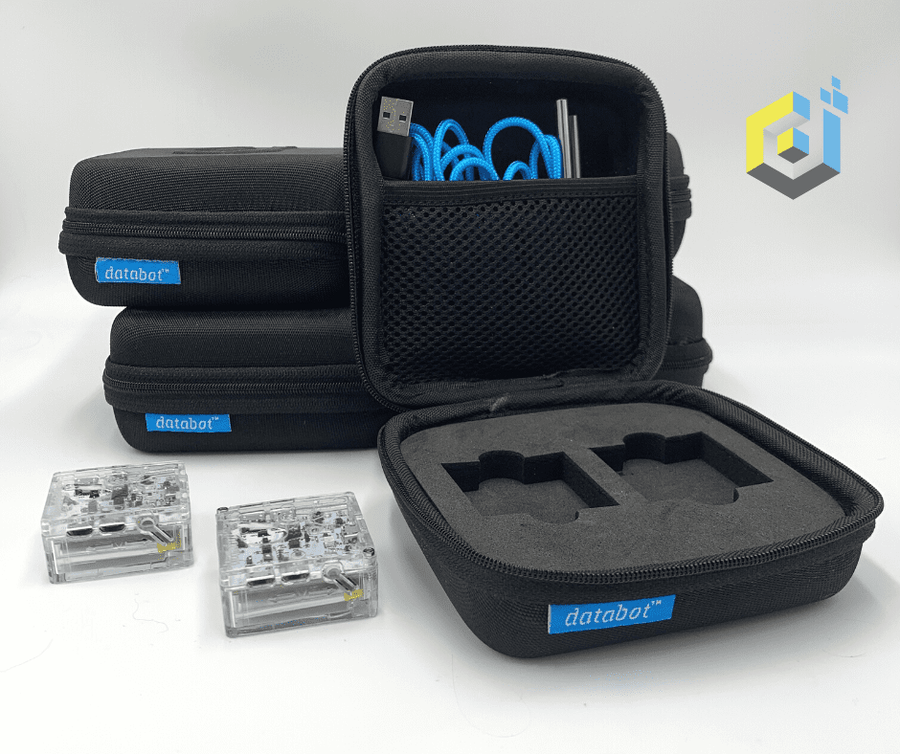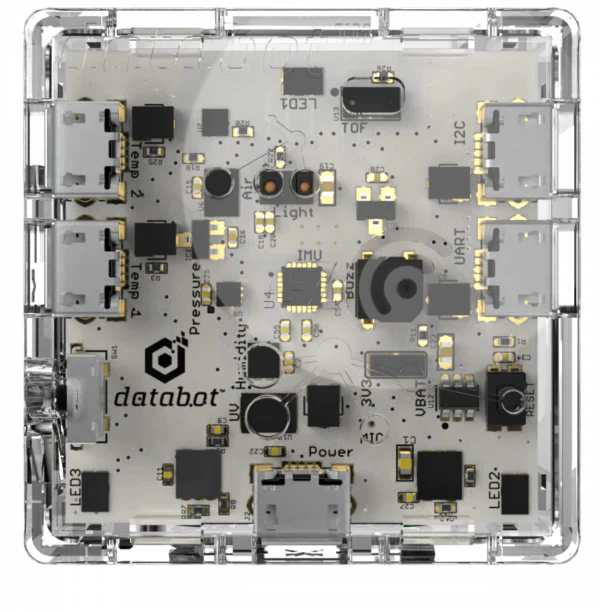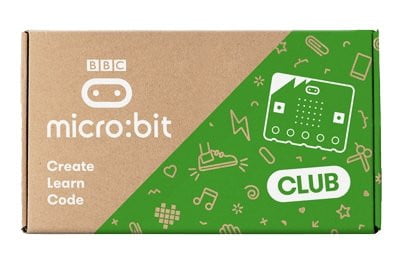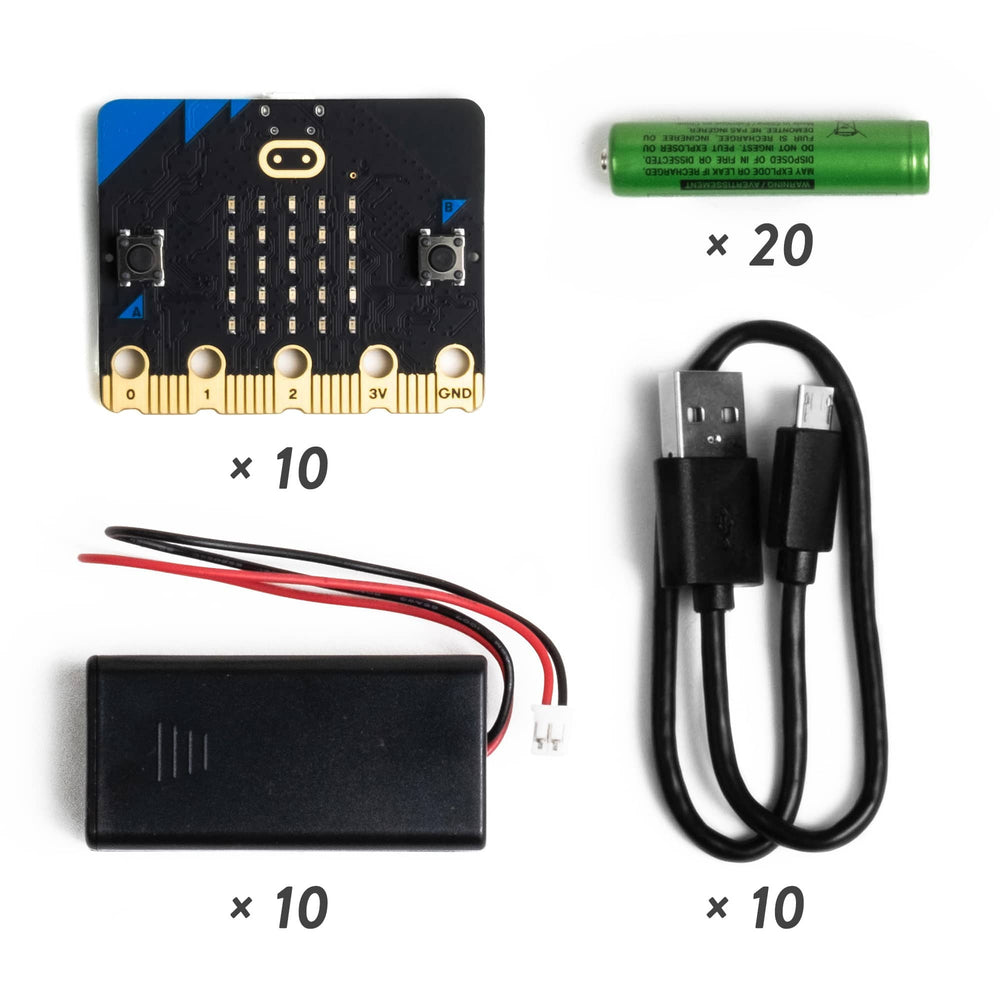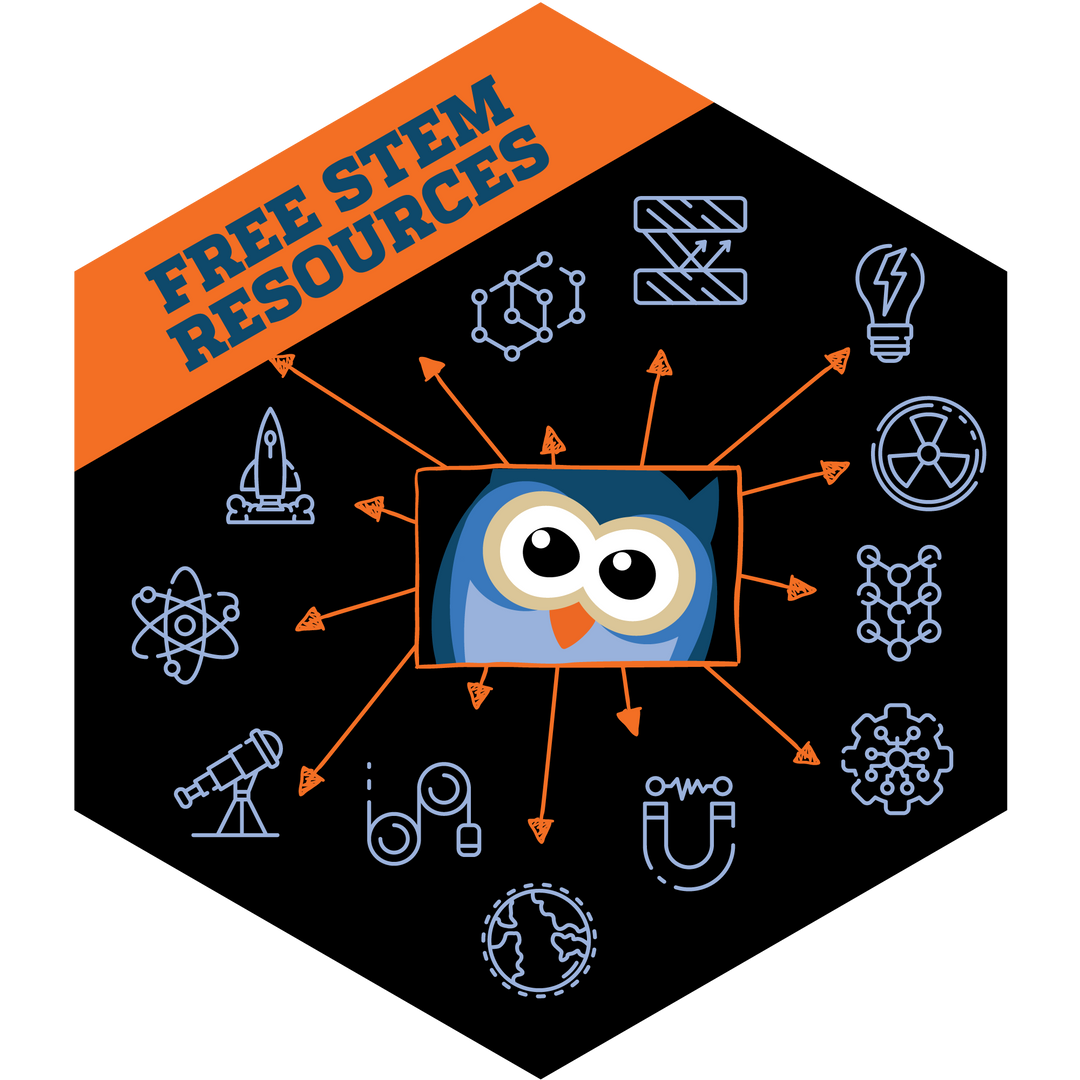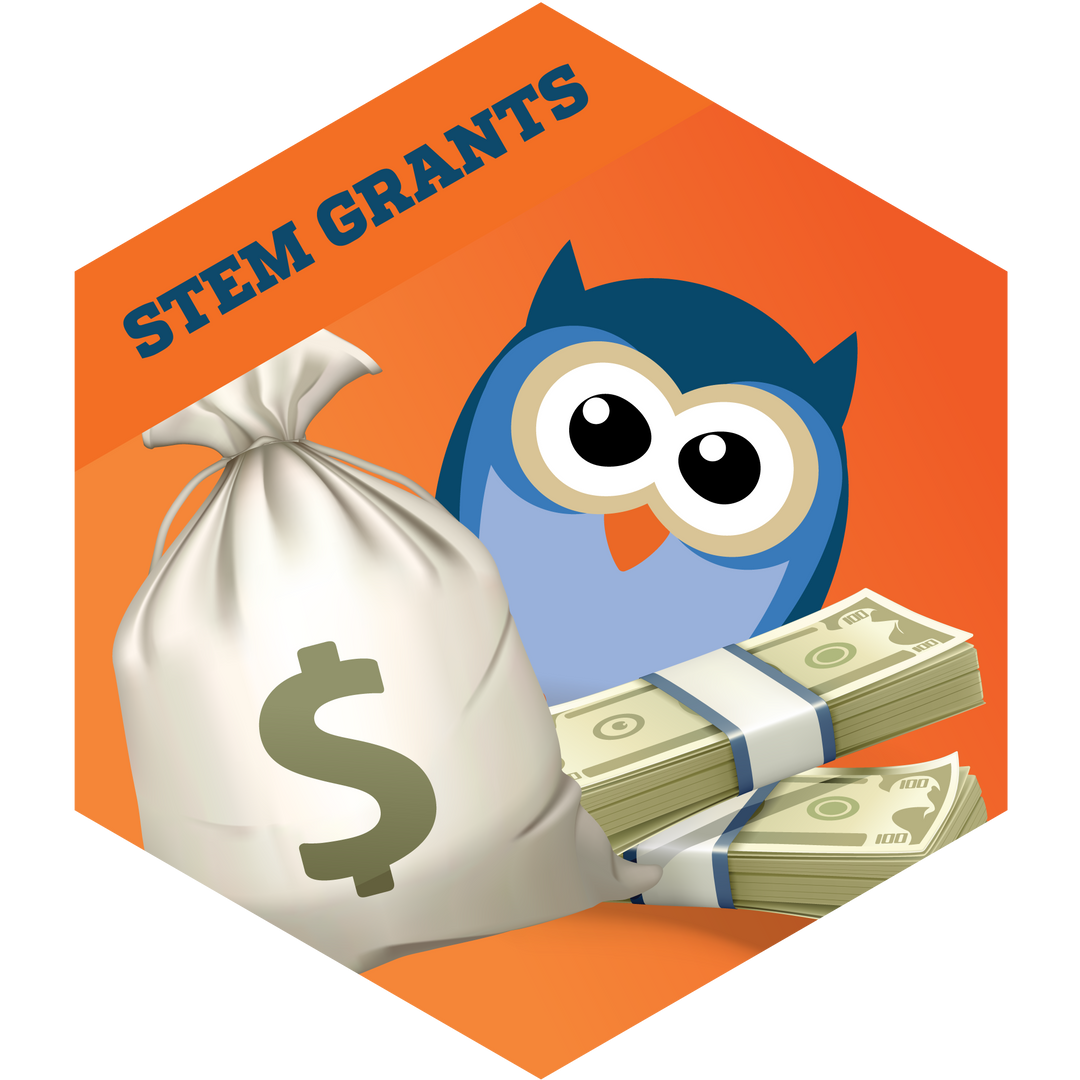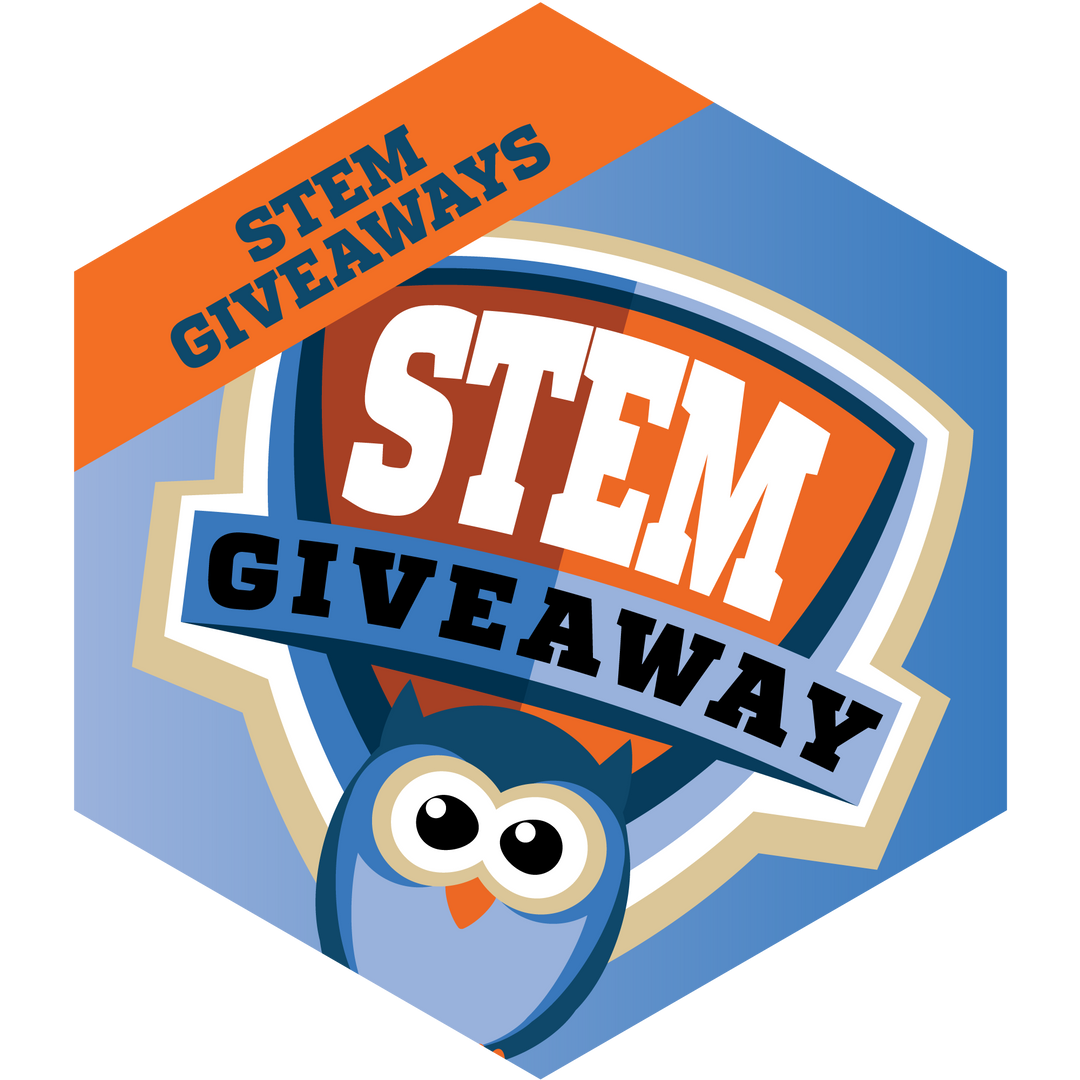Arduino Science Kit R3
- Grades: 7-12
- Number of Students: 1-2
- Number of Lessons: 10
- Contact Hours: 900 (10 experiments, 90 minutes each)
Highlights:
Dive into a world of physics like never before with the Arduino Science Kit R3. This kit is packed with a host of features that take learning beyond the confines of a traditional classroom, transforming abstract concepts into interactive, hands-on experiences. From performing engaging experiments to interpreting real-world data, students can now experience the thrill of scientific discovery first-hand.
Unleash the power of real-time data collection and analysis with the integrated Arduino Science Journal app. Foster critical data literacy and scientific inquiry skills as students collect, record, and interpret data from their own experiments. No prior coding or electronics experience? No problem! Our student and teacher-friendly design, complete with a preloaded program and seamless Bluetooth® connectivity, ensures an effortless learning journey. Plus, the comprehensive sensor ecosystem caters to a wide array of data collection possibilities, making this kit adaptable to ever-evolving educational needs.
Unlock a world of interactive learning with the Science Kit R3's robust hardware and software. With the Arduino Nano RP2040 Connect, Science Carrier R3, and an impressive array of sensors at your disposal, you'll have everything you need to embark on an exhilarating educational journey. Meanwhile, the Science Journal app effortlessly bridges the gap between theory and practice, facilitating real-time data collection, recording, and interpretation.
The kit elevates the learning experience by nurturing an enhanced understanding of complex physics concepts through engaging hands-on experimentation. It promotes scientific literacy and hones critical thinking skills by providing real-world application scenarios. With its intuitive content guide, both teachers and students can navigate through scientific explorations with ease.
Explore what the Science Kit R3 has to offer:
- Hands-on experimental learning: Perform physical experiments, transforming abstract physics concepts into tangible and interactive experiences.
- Real-time data collection & analysis: With the integration of the Science Journal app, the kit allows students to collect, record, and interpret real-time data with mobile devices, strengthening their data literacy and scientific inquiry skills.
- Teacher and student-friendly design: Equipped with a preloaded program, the kit requires no prior knowledge of coding or electronics. It also features Bluetooth® connectivity for easy data transmission from the Arduino board to the students' mobile devices.
- Comprehensive sensor ecosystem: The kit comes with multiple sensors, providing a wide range of data collection possibilities and keeping it adaptable to evolving educational needs.
- Free guided courses - Explore Physics: Includes an intuitive courses guide that assists teachers and students in using the kit, presenting and analyzing data, and evaluating experimental outcomes. These courses also help students effectively communicate their scientific discoveries.
- Comprehensive teaching support: With its intuitive guide, the Arduino Science Kit R3 eases the instructional process for teachers. It not only instructs on kit usage, but also assists in data presentation, analysis, and evaluation, ensuring students communicate their scientific discoveries effectively.
Curriculum or Lesson Topics:
How many lessons are included in the kit?
The kit includes access to a Getting Started guide and 10 hands-on physics experiments.
How long does a lesson last?
The hands-on experiments are approximately 90 minutes long. You may want to allocate some additional time for results analysis and discussion in a follow-up class.
What concepts are covered?
We have worked with educators and subject experts to select activities related to:
- Forces, motion, and interactions
- Waves, oscillations, and electromagnetic radiation
- Energy and energy transfer
- Structure and properties of matter
Do I need to follow the activities in the order provided?
No, you don’t. These activities can be run independently, however we recommend you get acquainted with the kit by using the ‘Getting Started’ first.
Do I need any prior experience with coding?
No, you don’t need any prior coding experience. The Nano RP2040 Connect is preloaded with a sketch to run your experiments straight out-of-the-box! You think about science, we’ll do the rest.
Standard Alignments:
The Science Kit R3 is designed for middle and high school students. This kit has been designed specifically for science and physics teachers interested in bringing an inquiry-based and hands-on approach to their classroom. The kit is currently aligned with:
- AP PHYSICS - 1: 4.A.1.1; 1: 3.B.1.1; 2: 2.D.2.1; 2: 7.A.3.⅔;
- IB DIPLOMA - A.1, A.2, A.3, C1, C.2, C.4, C.5, B.3, B.5, D.2
- NGSS - HS-PS4-1, HS-PS2-5, HS-PS3-3, HS-PS3-3, HS-PS3-4
- NYS - HS-PS2-1, HS-PS3-3, HS-PS2-5, HS-PS1-9/HS-PS3-4, HS-PS1/PS4-3/ESS1-3, HS-PS4-1
- UK(E) - KS3/4/5
What's Included:
What’s included in the kit?
The Science Kit R3 comes in a handy storage box, along with an Arduino Nano RP2040 Connect, the new Arduino Science Carrier R3 with a wide ecosystem of sensors embedded, and all the parts needed to assemble and carry out the experiments. You will only need to add some easy-to-find household items to keep experimenting, and a mobile device to log your data. You will have full access to our exclusive online content platform. It is required to install the Science Journal app to work with the kit. The app is free and compatible with Android and iOS operating systems.
Do I need any prior experience with coding?
No, you don’t need any prior coding experience. The Nano RP2040 Connect is preloaded with a sketch to run your experiments straight out-of-the-box! You think about science, we’ll do the rest.
What languages are available?
The Science Kit R3 is currently available in English. More languages will be added.
Where can I find building instructions for my Science Kit R3?
The kit doesn’t require assembly. The Nano RP2040 and Science Carrier R3 contain most sensors on board. You can find the URL course.arduino.cc/explore-physics of the experiments under the lid of the Science Kit R3 box.
Does my kit need batteries?
Yes, the Science Kit R3 requires the use of an external power source. You can use the computer as a power source also you may want to use a portable power bank (like the one used for charging your phone or tablet) or the JST connector to run remote experiments. Four AA batteries are required (not included in the kit).
Technology Requirements/Specifications:
Technology Specifications:- Arduino Nano RP2040 Connect
- USB-C®, 4xAA Battery holder & cable (JST connector), Banana Connectors
- Air Temperature, Humidity, Air Pressure, Proximity, Color Temperature, Light, Volatile Organic Compounds (VOC), IMU, Microphone (Nano), Voltage, Current, Resistance
- Ultrasonic Distance Sensor, Temperature Probe Sensor
- 2x Servo
- 2x I2C
- 2x Generic Analog Inputs
- 1,000 - 9,000 Hz, Phase control, Frequency multiplier, Frequency adjuster, Amplitude control. Output for speakers and Connection to oscilloscope
- Conductive Pads
- Connected to AP PHYSICS, IB DIPLOMA, NGSS, NYS, UK(E) standards
- Speakers x2
- VELCRO® strips
- Silicon stands
- Battery Holder
Hardware:
- Arduino Nano RP2040 Connect
- Arduino Science Carrier R3
- Embedded sensors:
- Air quality, temperature, humidity & pressure
- IMU: 6-axis linear accelerometer, gyroscope, and magnetometer
- Proximity, ambient light, light color
- Voltage or electric potential difference
- Electrical current
- Electrical resistance
- Function generators to see and hear the effect of frequency, amplitude, and phase on a sound wave
- Ambient sound intensity sensor
- Ports:
- 2x Grove analog inputs (for external temperature-probe sensor)
- 2x Grove I2C ports (for external distance & ping-echo sensor)
- 1x Battery JST connector
- 2x Output ports connected to lower power signal from function generators* (future generation)
- 1x 3.3 V output port and Ground
- 2x speaker ports connected to function generators
- Other:
- 50 cm double-ended cable - blue: crocodile clips one end, banana plug the other
- 20 cm double-ended cable - black: crocodile clips one end, banana plug the other
- 20 cm double-ended cable - red: crocodile clips one end, banana plug the other
- VELCRO® strips
- Silicon stands
- External temperature probe sensor
- Ultrasonic distance sensor
- Grove cable 4-pin housing with lock x2 (L=200 mm)
- USB-C® Cable
- 50 cm double-ended cable - yellow: crocodile clips one end, banana plug the other
- 2x Speakers
- Cable for battery holder with JST connector
- Battery holder for four 1v5 AA batteries
Special Notes and Considerations:
Frequently Asked Questions:
What operating system is required?
You can access the online content with Windows 7 or higher, Linux, macOS, and Chrome. You can install and run the Science Journal app with Android, iOS.
Is the Arduino board integration on the Science Journal app compatible with iOS devices?
Yes, the Science Kit R3 is compatible with the Science Journal app for Android and iOS.
Is this kit compatible with Chrome OS?
Yes. You can access the online content platform from your Chromebook or Chromebox.
If you own a Chrome OS System supporting Android Apps you will also be able to run Science Journal from your Chromebook.
Can I reprogram my Nano RP2040 Connect?
Of course you can! The Nano RP2040 Connect included in the kit is like any other regular Arduino board that you can use for many great projects. Learn more about the tech specs of this board here.
I have uploaded another sketch onto my board. How can I retrieve the original sketch to run my experiments?
You can retrieve the original sketch by searching for the library "Arduino_ScienceKitCarrier" in the Arduino Library Manager in either the offline Arduino IDE or the Arduino Web Editor.
What are the minimum requirements in the classroom?
Arduino System Requirements: USB port / Windows XP or higher / mac OS X 10.5 or higher / Linux / Chrome OS 38 or higher. Science Journal app System Requirements: Android OS 5 or higher / Chrome OS System supporting Android Apps. You will also need a working internet connection.
Do I need to solder?
No, you don’t. This kit includes plug-and-play modules or banana plug leads. No wiring, breadboards or soldering is required.
Is this kit compatible with Google Classroom?
Yes, this kit is compatible with Google Classroom. You can share the activities using the Classroom’s button.
Can I use this kit in my STEM after-school club?
Sure! This kit can be used in both formal and informal education settings.


